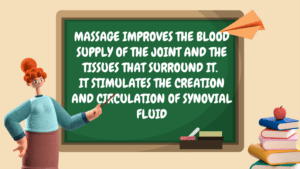Massage therapy is one of the oldest health treatments in the world. It has been used as a healing method for thousands of years, but there are still skeptics who ask for proof that it really works.

So let’s discuss: in the 21st century, the peak of the scientific era, can we prove that massage really has therapeutic effects? Does it transcend the physical? Does it transcend the psychological? Let’s see!
The essence of the “massage effect” is in what it produces in the tissues by stimulating the body’s receptor cells – principally those located in skin, muscles, tendons, and ligaments. Through those sensory pathways, the impulses pass through the circulatory system into the central nervous system, reaching different areas in the spinal cord, and then causing functional changes in a domino effect that spreads throughout the entire body.
Let’s break down those benefits by categories:
Skin: Massaging the skin produces local vasodilation* and an increase in temperature. The heat leads to a softening of the tissues and the stretching and relaxation of its fibers. This increases the elasticity of the skin.
*According to the NIH, “Vasodilation is the widening of blood vessels as a result of the relaxation of the blood vessel’s muscular walls; it is a mechanism to enhance blood flow to areas of the body that are lacking oxygen and/or nutrients.”
Circulatory system: The vasodilation produced by massage therapy also results in improved circulation in skin and muscles. This helps to optimize cellular metabolism, boost production of blood cells, and eliminate cellular waste. In addition, lymphatic circulation is stimulated, which leads to deeper relaxation, a decreased heart rate, and lower blood pressure.
Muscular system: Massage therapy, especially deep tissue work, plays a crucial role in helping with muscle recovery. Massage relaxes tense muscles, so they stop exerting pressure on the lymphatic and blood vessels and instead expel histamine and adrenaline (chemical elements that cause muscle fatigue). By removing waste from the cells, the venous and capillary systems open which allows for large amounts of oxygen and nutrients to enter. This Harvard study shows why and how massage helps to decrease muscle pain, lessens the intensity of post-exercise pain, and speeds up the healing process.

Joints and skeletal system: Massage therapy improves the blood supply in the joints and tissues, stimulating the creation and circulation of synovial fluid. It increases the elasticity of the ligaments and loosens the fascia. This, plus the relaxing effects massage has on the muscular system, provides considerable improvement in the range of motion of the joints.
Nervous System: Massage therapy improves the body’s ability to receive stimuli and make neural connections. The motor response throughout the entire body is stimulated by the power of therapeutic touch, leading to better body awareness and relaxation.
Metabolism: We have already mentioned that massage therapy increases the temperature of the treated area, increasing blood flow through vasodilation, providing more oxygen, and thus improving metabolic activity. You will notice how massage helps your digestive system, especially after receiving abdominal work. You will feel less bloated because of the decreasing levels of cortisol, the stress hormone which can lead to belly fat.
So as you can see, massage therapy has been shown to have a positive effect on basically every system of the body. With this knowledge, we can say without a doubt that massage therapy is not a luxury but rather an excellent, natural way to maintain and improve the health of the body. Come visit us at Healing Hands and experience for yourself the countless benefits massage has to offer!
